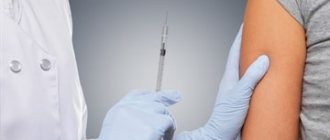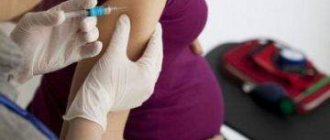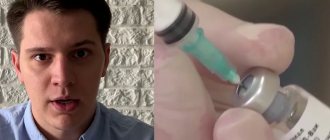Is vaccination mandatory in the army?
By its specificity, vaccination is a type of medical intervention.
This provision is formed from Art. 1 of the Law of September 17, 1998 No. 157-FZ and Art. 2 of the Law of November 21, 2011 No. 323-FZ. The intervention is carried out on a voluntary basis and with the consent of the citizen. But there are exceptions. The state sanitary doctor of the region has the right to issue a decision on compulsory immunization of individual citizens - for example, depending on the service sector in which the individual works. The same right is granted to deputy doctors. The mandatory immunization procedure for military personnel is established by the chief state sanitary doctor of the Ministry of Defense. Resolution of the Chief State Sanitary Doctor of the Ministry of Defense of the Russian Federation dated June 18, 2021 No. 129 clarifies whether vaccination against coronavirus is mandatory in the army and sets the timing for its implementation. Medical intervention is carried out for conscripts and contract employees.
Can they be fired if they are not vaccinated?
Technically, this is impossible - citizens of the Russian Federation cannot be legally forced to make decisions regarding their own health, and mandatory vaccination measures are among such decisions.
On the protection of a military man (as well as any other Russian) Federal Law No. 323 “On the fundamentals of protecting the health of citizens” and Federal Law No. 157 “On the immunoprophylaxis of infectious diseases” - according to the provisions of these laws, anyone has the right to refuse.
Is it possible to refuse compulsory vaccination in practice? It’s more complicated here - the fact is that the above laws were adopted in the pre-Covid era, when measures to counter epidemic situations related to proven diseases - measles, influenza, tuberculosis, etc. The provisions of the law that regulate vaccinations say that this is a voluntary decision - but at the same time there are a number of restrictions for people who have spoken out against it in accordance with their right.
It is impossible to dismiss on the basis of lack of vaccination, however, if vaccination is carried out at the recruiting station right during registration, it will be difficult to achieve an official refusal - but possible.
The main thing for a conscript is to stand his ground, to insist that due to previous illnesses or other individual indications, he wants to exercise his right to purely voluntary consent. If possible, it is better to obtain a help certificate in advance.
How and when will military personnel be vaccinated?
For citizens serving in the army, immunization is carried out in two stages: until July 15, 2021 and until August 15, 2021, with the first and second components, respectively. The established period is similar to the period established for most regions in which immunization is mandatory. As of July 14, 2021, the following list of immunization regions has been established.
As of July 21, 2021, the number of vaccine doses administered is 55.8 million. 22 million people have been fully vaccinated, which is approximately 15%. There are no specific recommendations on the procedure for immunization of military personnel. For the GAM-COVID-VAK vaccination, the clarifications established by the letter of the Ministry of Health of the Russian Federation dated February 20, 2021 No. 1/I/1-1221 apply. The document determines the equipment of mobile and stationary points of the medical procedure, the list of actions of a medical worker before the moment of immunization, the procedure for storing the drug, and the procedure for registering the results.
ConsultantPlus experts have discussed how to refuse vaccinations. Use these instructions for free.
Vaccination of military personnel
Vaccinations in the army are preventive measures against contracting military personnel with many dangerous infections. In Chapter No. 8, Article 345 of the Internal Service Charter, there is an entry according to which routine preventive vaccinations are carried out in the army. They are given to all military personnel. And due to the epidemiological situation, vaccination is carried out by order of the commander.
During military service, scheduled vaccinations are carried out according to the calendar against:
- rubella;
- chicken pox;
- and annually against influenza.
The army also vaccinates against hepatitis A, because the virus of this infection constantly circulates in military field conditions. Persons who did not have it in childhood and did not receive a vaccine against this disease often become infected with hepatitis when they enter the army. The disease is manifested by liver enlargement and jaundice. The causative agent of the disease causes a chronic form of the disease, requiring long-term treatment with diet for a number of years.
Also, according to epidemiological indications, the army carries out immunization:
- from tick-borne encephalitis;
- from intestinal infections.
Responsibility
The rule of law defining liability solely for refusal to vaccinate against coronavirus has not been established. Qualification is possible under Art. 6.3 Code of Administrative Offenses of the Russian Federation, depending on the appropriate composition. By its legal nature, the article establishes liability for non-compliance with laws in the field of sanitary and economic well-being of the population, committed during a period of threat of the spread of the disease. Among the types of punishment for citizens, the article provides for a fine and a warning.
Complaints from soldiers' mothers
Often on the Internet there are justified complaints from soldiers' mothers about violations of vaccination rules in the army - soldiers are given several vaccinations at the same time, without observing a month's interval between them. As a result of delays in vaccination, various complications are likely, including possible death.
Doctors of military medical institutions are required to comply with the vaccination rules according to the Vaccination Calendar and the Federal Law on “Immunoprophylaxis of Infectious Diseases.”
Cases of post-vaccination consequences must be documented and then filed in court to establish a violation of the procedure or rules of vaccination. The court, at the request of the mothers, must make a decision on compensation for harm to the health and life of the serviceman.
Normative base
Order of the Minister of Defense of the Russian Federation dated May 20, 2021 No. 285 “On establishing the procedure for military personnel of the Armed Forces of the Russian Federation to undergo medical examinations and medical examinations”
Order of the Russian Guard dated April 23, 2021 No. 142 “On medical examinations and medical examinations for military personnel of the National Guard of the Russian Federation”
Letter of the Ministry of Health of Russia dated February 20, 2021 No. 1/I/1-1221 “On the procedure for vaccination with the GAM-COVID-VAK vaccine against COVID-19 of the adult population” (together with the “Methodological recommendations “Procedure for vaccination with the GAM-COVID-VAK vaccine against COVID-19 of the adult population"
Refusal of vaccinations in the army
Are they recruited into the army without vaccinations and is it possible to refuse them? At the military registration and enlistment office, conscripts are examined by a medical commission. If after the examination there are no contraindications, mandatory vaccinations will be carried out.
Refusal of vaccinations in the army is possible only with a doctor’s opinion. Otherwise, the recruit becomes unprotected against many dangerous infections. Military field conditions in the army are a source of infection with hepatitis A and tetanus. Crowding and close contact between military personnel contribute to the immediate spread of infections, especially influenza.
To summarize, we note that vaccinations in the army are necessary to prevent epidemics. In order to avoid complications and severe reactions after them, military doctors must follow the rules for administering vaccines. Military personnel must be examined by a doctor on the day of vaccination.
Vaccines used for chickenpox vaccination
The article analyzes the incidence of chickenpox at the present stage, and the development of a system for the prevention of this infection in the world. It is indicated that in Russia there is currently no domestic vaccine against chickenpox. Information is provided on the production of the Oka vaccine strain for the first time in Japan, on the development of vaccines and quality control requirements in Japan and Belgium. The results of assessing the quality of the Okavax and Varilrix vaccines when carried out at the GISC named after. L.A. Tarasevich laboratory pre-registration tests. An analysis of clinical trials of the above vaccines against chickenpox is given based on the materials presented in the drug dossier.
Chickenpox (chickenpox) is an acute and highly contagious disease caused by type 3 herpesvirus - Varicella zoster, belonging to the Herpesviridae (herpesvirus) family. Chickenpox (primary chickenpox) is considered a minor childhood infection; it affects mainly children from twelve months of age to 15 years. Children of older age groups may experience serious post-vaccination complications, such as secondary bacterial infection and pneumonia.
In adults and adolescents, the infection is severe and is often accompanied by complications (pneumonia, encephalitis, hepatitis, etc.), the likelihood of which increases with age. In cases of immune disorders (leukemia, cancer, immunodeficiencies of various origins), infection caused by the varicella-zoster virus is especially severe, sometimes fatal.
During pregnancy, the infection is also severe and chickenpox in the first trimester of pregnancy can cause damage to the central nervous system of the fetus, defects in the development of limbs, microophthalmia, cataracts and other eye diseases, including blindness.
After the illness, the virus enters the latent phase. When the infection is reactivated, most often at the age of 30 to 60 years and older as a result of various reasons (stress, concomitant respiratory infections, etc.), the virus, which usually persists in the spinal nerve root ganglia, is activated and a disease occurs - herpes zoster , occurring with severe pain, often leading to loss of ability to work. If left untreated, relapses of herpes zoster can occur repeatedly throughout life.
As with a number of other viral infections, such as measles, mumps, rubella, one of the leading means of protection against chickenpox is the chickenpox vaccine.
Currently, vaccination of children against chickenpox is included in the vaccination schedule of a number of European Union countries, including Germany, Great Britain, Italy, Spain, and France. The chickenpox vaccine Varilrix is registered in a number of CIS and Baltic countries - Ukraine, Kazakhstan, Azerbaijan, Uzbekistan, Estonia, Latvia, Lithuania.
In the USA, prevention against chickenpox has been carried out since 1995. Vaccination of children at risk among adolescents and adults has proven high clinical and economic effectiveness - since 1999 in the USA there has been a sharp decrease in morbidity and mortality from this disease.
The Okavax chickenpox vaccine has been introduced into the vaccination schedule in Japan, South America, Canada, Australia, South Korea, Taiwan and other Pacific countries. According to the results of prospective observation, the duration of post-vaccination immunity ranges from 6 to 11 years, in some cases up to 20 years.
In Russia, vaccination against chickenpox was not used until recent years (before foreign vaccines against chickenpox were registered in the Russian Federation), mandatory vaccination of children against chickenpox was not included in the Vaccination Calendar.
Between 2005 and 2008, two vaccines against chickenpox were registered in Russia - Varilrix, produced in Belgium and Okavax, produced by the Infectious Diseases Research Foundation of Osaka University (BI-KEN), Japan.
Laboratory control of batches, examination of submitted regulatory documents and reports on clinical trials of these vaccines, preparation of vaccines for registration in the Russian Federation were carried out at the Federal State Budgetary Institution GISC named after. L. A. Tarasevich Rospotrebnadzor.
Two more vaccines are being produced abroad: Varivax and Zostervax, produced in the USA, but these drugs were not submitted for registration in the Russian Federation.
In Belgium, the tetravaccine “MMRV” was developed and tested - a combined live attenuated vaccine against measles, mumps, rubella and chickenpox, but this drug was not submitted for registration in the Russian Federation. There is still no domestically produced vaccine against chickenpox in the Russian Federation.
The first research into the development of a vaccine against chickenpox began in Japan and consisted of creating a cultured live vaccine technology based on an attenuated (weakened) varicella zoster virus.
The Oka vaccine strain of varicella zoster virus was isolated in Japan in the 70s from the vesicular fluid of a boy named Oka who had a mild case of chickenpox. The virus was isolated and repeatedly passaged in a culture of human embryonic lung cells, then in a culture of guinea pig embryonic cells and in a culture of continuous human diploid WI-38 cells, and then in a culture of human diploid MRC-5 cells.
The virus obtained as a result of passages differed from wild strains of the varicella virus in a number of indicators—attenuation markers:
A. low level of reproduction in cell culture at a temperature of 390 ° C; b. a more pronounced immune response when immunizing guinea pigs compared to immunization with a wild virus; c. higher reproduction in cell culture of guinea pig embryos compared to wild strains of the varicella eoster;g virus. Restriction analysis revealed differences in the nucleotide composition of the genome of the Oka vaccine strain compared to the wild varicella zoster virus; d. lack of neurovirulence for monkeys sensitive to the varicella virus in the Oka vaccine strain (according to clinical and histological examination of brain-infected monkeys).
To maintain the strain, a system of seed series was used on the MRC-5 transplantable cell culture: vaccine strain (initial), working virus bank and seed virus - no more than 3-4 passages until a semi-finished vaccine was obtained.
Later, the Oka vaccine strain was transferred to a US scientific laboratory, where the virus was passaged in a human diploid cell culture - WI-38, and further passage of the virus was carried out in a MRC-5 cell culture. This is how the Varivax vaccine was created.
In Belgium, for the production of the Varilrix vaccine, the Oka strain was obtained under license from Osaka University, Japan; further development of the strain and production of the vaccine was carried out on the MRC-5 cell substrate.
In 1984, the WHO Committee of Experts on Biological Standardization, based on the results of studying the vaccine strain “Oka”, the development of technology for obtaining and methods of control of cultured live attenuated vaccine against chickenpox in various countries, developed international requirements for the vaccine strain of the varicella zoster virus “Oka” and vaccine production technologies, properties and control methods of the vaccine are determined.
International requirements for varicella vaccine, approved in 1985, were last revised by WHO in 1993 (WHO Technical Report Series 848, 1994). The attenuated strain “Oka” of the varicella zoster virus has been recognized as a vaccine for the production of vaccines against chickenpox in various countries around the world.
In accordance with materials presented by Belgium and the Osaka University Infectious Diseases Research Foundation, Japan, the Oka vaccine strain and a production culture of human diploid cells, MRC-5, were studied at all levels of passaging. When obtaining a production line of MRC-5 cell culture, sterility, absence of mycoplasmas and other foreign agents (on animal cell cultures and chicken embryos), absence of tumorigenicity, proliferative activity, karyology and identity were studied at each passage.
In the same way, the Oka strain was studied for sterility, the absence of mycoplasmas and other foreign agents, biological activity, authenticity, specific safety (lack of neurovirulence for monkeys sensitive to the varicella zoster virus), acute and chronic toxicity when infecting laboratory animals of various ages (mice , guinea pigs, white rats, rabbits).
During the research process, the optimal composition of drugs per one vaccination dose was developed for both vaccines, which is given in Table. 1.
Table 1. Composition of the Varilrix and Okavax vaccines intended for the prevention of chickenpox
| "Varilrix" | "Okavax" |
| Live attenuated Varicella Zoster virus strain Oka - ≥ 103.3 PFU | Live attenuated Varicella Zoster virus strain Oka - ≥ 103.3 PFU |
| Human serum albumin – 1 mg | Buffer system:
|
| Lactose 32 mg | Sucrose 25 mg |
| Sorbitol 6 mg | |
| Mannitol 8 mg | Sodium glutamate 36 mg |
| Amino acids 8 mg | |
Antibiotic:
| Antibiotics:
|
The solvent for both vaccines is water for injection, 0.5 ml.
Based on the analysis and examination of materials on vaccine production technology, the results of preclinical tests presented by the manufacturers of both vaccines, the GISC named after. L. A. Tarasevich, the requirements for assessing the quality of vaccine series that were included in Russian regulatory documentation were edited and agreed upon. These requirements were used when carrying out laboratory testing of batches presented by the companies - and Okavax at the Federal State Institution GISC named after. L. A. Tarasevich Rospotrebnadzor (Table 2).
Table 2. Requirements and quality indicators of the Okavax and Varilrix vaccines
| ND indicators | Okavax standards | Varilrix standards |
| Description | Amorphous mass or white powder | Amorphous mass of creamy yellow color |
| Authenticity | The attenuated strain of the Varicella Zoster virus (Oka strain) contained in the vaccine must be neutralized by immune serum to the Varicella Zoster virus in a neutralization reaction in a culture of human diploid cells LEC, or any other culture sensitive to the varicella zoster virus; the presence of neutralization is detected by the method of indirect immunofluorescence by specific luminescence in cells infected with the varicella zoster vaccine virus - OKA strain. | The attenuated strain of the Varicella Zoster virus (Oka strain) contained in the vaccine must be neutralized by immune serum to the Varicella Zoster virus in a neutralization reaction in a culture of diploid human cells LEC, or any other culture sensitive to the varicella zoster virus. The neutralization index must be at least 1.2 lg. |
| Dissolution time | No more than 2 minutes. | No more than 2 minutes. |
| Description of the reconstituted drug | Colorless transparent or slightly whitish liquid | Transparent liquid from yellow-pink to pink |
| Transparency of the reconstituted drug | The opalescence of the solution must be comparable with standard II | The opalescence of the solution must be comparable with standard I |
| pH of the reconstituted drug | From 6.8 to 8.0 | From 6.9 to 7.4 |
| Mechanical inclusions of the reconstituted drug | There should be no visible inclusions | There should be no visible inclusions |
| Weight loss on drying | No more than 3.0% | No more than 3.0% |
| Pyrogenicity | Must be pyrogen-free | Must be pyrogen-free |
| Bacterial endotoxins | No more than 25 U/ml | No more than 25 U/ml |
| Abnormal toxicity | Must be non-toxic | Must be non-toxic |
| Sterility and absence of mycoplasmas | Must be sterile and free of mycoplasmas | Must be sterile and free of mycoplasmas |
Quantitative determination of antibiotics
| Not more than 7 mcg/0.5 ml Not more than 2 mcg/0.5 ml | No more than 25 mcg/dose |
| ||
| Bovine serum albumin (BSA) | Not more than 0.5 mcg/0.5 ml | No more than 0.5 mcg/dose |
| Specific activity | Contents of the Varicella Zoster vaccine virus; Oka strain, one vaccination dose (0.5 ml) must contain at least 1000 PFU of virus | The content of the Varicella Zoster vaccine virus, Oka strain, in one vaccination dose (0.5 ml) must be at least 1000 PFU of the virus |
In accordance with the requirements and descriptions of control methods, during laboratory control of three batches of each drug, it was established that their quality corresponded to the regulated indicators. The results of monitoring batches of the Okavax vaccine and batches of the Varilrix vaccine indicate that the vaccine batches comply with the requirements specified in Table. 2.
According to materials presented by the company, clinical trials of this drug were first conducted from 1973 to 1983, and 53 medical institutions in Japan participated in them. In accordance with international requirements, trials of the Okavax vaccine were carried out in three phases. During phase 1 trials, 2 batches of the vaccine were used for study.
The following population groups were used as contingents for vaccination:
- healthy children and adults;
- children with concomitant diseases;
- children and adults at high risk of infection;
When organizing the tests, the test rules in force in international practice were used:
- informed consent of adults or parents of children for vaccination;
- assessment of adverse reactions: local within 48 hours after vaccination, general within 4-6 weeks. after vaccination;
- isolation of the virus from vesicles if the latter appear;
- monitoring of persons who have been in contact with vaccinated persons in order to determine the possibility of infection of contact persons;
- immunological effectiveness in terms of seroconversion - assessment of the level of specific antibodies in the sera of those vaccinated in the RTGA, immunofluorescence and in the neutralization reaction;
- long-term (from 6 months to 7 years) observation of vaccinated people - study of the duration of immunity, chickenpox disease among those vaccinated with the vaccine.
As a result of the first phase of clinical trials, the following was established.
- In 41 vaccinated healthy children aged 2 to 5 years, specific antibodies were detected in more than 90% of those vaccinated, regardless of the dose of the virus in the vaccine (500 PFU, 200 PFU, 100 PFU); There were no side effects in healthy children during vaccination.
- Children with concomitant diseases: nephrosis, nephritis, thrombopenic purpura, osteomyelitis, hepatitis, enteritis, arthritis, bronchial asthma, meningitis, hemangioma - a total of 28 children, of which 23 were sero-negative, 12 received steroid therapy. The children were vaccinated due to contact with a child with chickenpox. The seroconversion rate was 100%, side effects: in 6 out of 28 - temperature above 370 C, vesicular rash in 2 children within 1-1.5 days after vaccination.
- 4 children aged 2 to 5 years were vaccinated, diagnosed with acute leukemia in the stage of complete remission, without chemotherapy for 2 weeks. before and 2 weeks after vaccination. The vaccine dose is 500 PFU. In all children, a fourfold or more increase in antibody titers was observed; fever and specific rashes were absent.
- When 30 healthy children were vaccinated with different doses of the vaccine virus (from 200 PFU to 2000 PFU), the production of antibodies and the absence of side effects were observed. When vaccinating 20 children with acute leukemia (from 1 year to 9 years), seroconversion was observed in 17 out of 20 people, side effects were manifested by fever and a mild rash in 50% of those vaccinated.
In phase 2 of the clinical trials of the Okavax vaccine, two series of the vaccine were used, obtained after 6 additional passages in the culture of diploid WI-38 cells. Children diagnosed with leukemia or other malignant neoplasms were vaccinated. The test conditions were the same as in phase 1, but not only vaccinated children were monitored, but also other family members.
- Acute leukemia. 102 children were vaccinated. Serocon version is from 88.9% to 93.3%, the frequency of adverse reactions is 18.1%.
- Solid malignant tumors. 13 children were vaccinated, the seroconversion rate was 92.3%, and an adverse reaction occurred in 1 child.
- Concomitant diseases (without a febrile component) 104 children were vaccinated. Seroconversion was 100%.
During phase 3 clinical trials, vaccinations were carried out using 18 batches of the vaccine obtained under production conditions on a culture of human diploid cells MRC-5. The purpose of phase 3 trials is to study the vaccine in practical use for patients at high risk of infection (leukemia, malignant tumors), nephrosis, collagenosis, bronchial asthma, and also when vaccinating adults - students, doctors, women (to prevent the occurrence of infection during pregnancy).
As a result of the phase 3 trials of the Okavax vaccine, 1,252 healthy children were vaccinated. Seroconversion was observed in 1206 children (96%), adverse reactions (mild) in 15 children (1%), and mild chickenpox was diagnosed in 13 children (1%) during one year of follow-up after vaccination.
2179 patients diagnosed with acute leukemia (on cessation of chemotherapy) were vaccinated. Seroconversion was determined in 166 people (93%). Adverse reactions: rash, mild fever in 31 people (17%), clinical manifestations of chickenpox were detected in 32 patients (18%) after vaccination (23 - mild, 7 - moderate, 2 - severe). The last two children with severe chickenpox were infected during a course of intensive chemotherapy.
333 patients with various concomitant diseases were vaccinated. Seroconversion in 306 patients (92%), adverse reactions in 15 people (5%), chickenpox was diagnosed in 9 vaccinated people (3%). Long-term observations of vaccinated people were carried out for 7 years.
A total of 810 patients were observed (neurological diseases - 276, heart diseases - 146, malignant neoplasms - 87, immunological and allergic diseases - 155, congenital anomalies and malformations - 78, diseases of the gastrointestinal tract and endocrine system - 68), of which Of these, only 21 patients showed symptoms of chickenpox after vaccination, and in 4 cases the development of herpes zoster was noted.
Currently, the Okavax vaccine is used in 32 countries around the world. During the period from 2004 to 2007, the BIKEN enterprise produced and sold more than 4.5 million doses of the Okavax vaccine in Japan and other countries of the world; during this period, only 38 cases of adverse reactions of varying severity were recorded with the predominance of mild reactions.
The Okavax vaccine is intended for:
- for the prevention of chickenpox from 12 months, primarily in persons classified as high-risk groups who have not had chickenpox and have not been vaccinated previously.
- for emergency prevention of chickenpox in persons who have not had chickenpox and have not been vaccinated previously, who were in close contact with patients with chickenpox (family members, doctors, paramedical and junior medical personnel, as well as other persons). Vaccination schedules:
- children from 12 months to 13 years - 1 dose (0.5 ml) of the vaccine once, subcutaneously.
- persons over 13 years of age (including those in contact with high-risk groups and sick people) - 1 dose (0.5 ml) twice with an interval between doses of 6-10 weeks, subcutaneously.
Emergency prophylaxis - 1 dose (0.5 ml), once, subcutaneously within the first 96 hours after contact (preferably within the first 72 hours). The Varilrix vaccine was studied as part of an international trial: “A blinded, randomized, controlled, multicenter study of a live attenuated varicella vaccine produced in Belgium, administered in a single dose regimen, and a combination vaccine against measles, mumps, rubella, chickenpox, produced in . Belgium, prescribed in a two-dose regimen to healthy children during the second year of life.” Trials were conducted to evaluate clinical effectiveness against chickenpox disease.
Clinical trials of the Varilrix vaccine as part of the above trial were conducted in the period 2005-2006. The immunological effectiveness (% of seroconversions and GMT (geometric mean titer) of antibodies to the varicella zoster virus) and the safety of the vaccine were assessed 42 days, 84 days, 1 year, 2 years after a single vaccination of children of the second year of life.
In this international study, children were vaccinated with the Varilrix vaccine also in Russia. In total, more than 5,000 children were vaccinated, of which 397 children aged 12 to 22 months were vaccinated in Russia, who had no contraindications to vaccination, who had not had chickenpox, and whose parents signed informed consent to participate in this study. During a two-year observation of vaccinated children in Russia, not a single case of chickenpox was identified.
In general, with a single vaccination, 42 days after vaccination, seroconversion was observed in 97% of those vaccinated, in 55% of children, the antibody GST was more than 1:128, while low reactogenicity rates were detected - 20% of moderate local reactions, 3.8% of moderate temperature reactions reactions in the complete absence of serious adverse events.
Based on the certification of the series of vaccines against chickenpox, Okavax and Varilrix, for compliance with the requirements of regulatory documentation, analysis of the results of preclinical studies and international clinical trials conducted, organized by, many years of use of vaccines in various countries of the world - the vaccine against chickenpox "Varilrix" and "Okavax" - registered in the Russian Federation and recommended for practical use for vaccination of children from twelve months of age and adults.
The current situation with chickenpox in Russia is more than 1000 cases of chickenpox per 100 thousand population, the incidence of children has almost doubled in recent years, and severe damage is caused to the health of adults, especially the elderly.
Among airborne infections (excluding influenza and ARVI), chicken pox accounts for 50-70%. Every year in the Russian Federation, 500-800 thousand cases of this disease are registered, while 10 thousand children develop severe complications, about 50 people die annually. Mostly children aged 3-6 years are affected; the contagiousness index reaches 100%.
The current situation urgently requires organizational measures to prevent chickenpox in Russia. It is necessary, taking into account the accumulated international experience, to consider the possibility of organizing domestic production of the chickenpox vaccine to provide the population of the Russian Federation with the required number of vaccine doses.
Literature:
- Vorobyova M. S. Ladyzhenskaya I. P., Barkhaleva O. A. - “Current state of vaccine prevention of chickenpox (Varicella zoster)” Abstracts of the All-Russian scientific and practical conference “Vaccinology 2008. Improving immunobiological means of prevention, diagnosis and treatment of infectious diseases”, Moscow, 2008, p. 32.
- VC. Tatochenko - Vaccination against chickenpox. We answer questions from pediatricians (reprint) - J. Questions of modern pediatrics, 2009, No. 3 (vol. 8).
- “Treatment and prevention of chickenpox in children in modern conditions” Methodological recommendations prepared by Timchenko V.N. with co-authors, St. Petersburg, 2008, 32 pages. Infectious morbidity in the Russian Federation in 2005-2006 (Information collection) / Federal Center for State Sanitary and Epidemiological Sciences of the Ministry of Health of the Russian Federation, M. 2007, pp. -5, 13, 20.
- Instructions for use of the Varilrix vaccine.
- Instructions for use of the Okavax vaccine.








